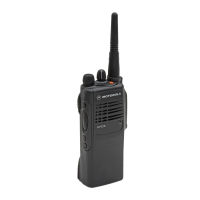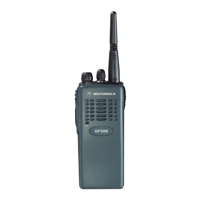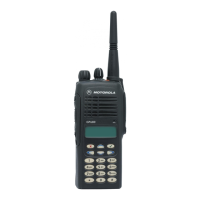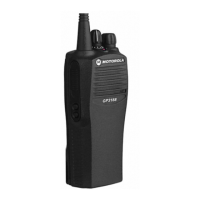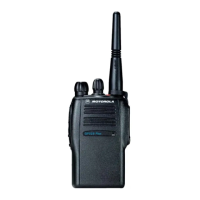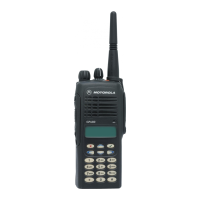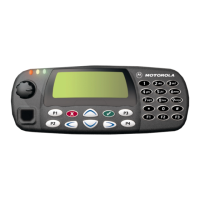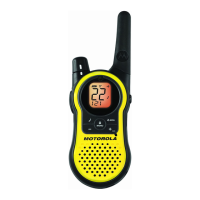Do you have a question about the Motorola GP140 and is the answer not in the manual?
Provides information on safe operation and exposure to electromagnetic energy.
Discusses potential interference and compatibility issues with electronic devices.
Highlights critical warnings for radio operation.
Lists cautionary advice for using the radio.
Provides general guidelines for maintaining the radio.
Details the physical controls of the radio and their functions, referencing numbered illustrations.
Explains the meaning of different audio tones used by the radio.
Details the types and usage of programmable buttons, including short press and long press functions.
Improves voice quality by reducing unwanted background noise during reception.
Compresses voice at transmission and expands at reception to improve voice quality.
Instructions for powering the radio on/off and adjusting its volume.
Details the process of switching between the radio's available channels.
Steps to transmit a message, including microphone usage.
Basic procedure for receiving communications on the radio.
Procedures for activating and deactivating the emergency siren function.
Enables direct radio-to-radio communication bypassing the repeater.
Adjusting squelch levels to manage incoming signal quality and noise.
How to begin and end the radio's channel scanning feature.
Enables responding to calls during scan operations.
Essential tips for maintaining rechargeable batteries for best performance and lifespan.
Procedure for connecting the battery pack to the radio body.
Procedure for detaching the battery pack from the radio body.
Steps to correctly attach the belt clip to the battery.
Steps to correctly remove the belt clip from the battery.
Information and instructions for the safe and efficient use of Motorola radios.
Guidelines and standards related to human exposure to radio frequency electromagnetic energy.
Warning against placing radios in air bag zones to prevent injury during deployment.
Provides information on safe operation and exposure to electromagnetic energy.
Discusses potential interference and compatibility issues with electronic devices.
Highlights critical warnings for radio operation.
Lists cautionary advice for using the radio.
Provides general guidelines for maintaining the radio.
Details the physical controls of the radio and their functions, referencing numbered illustrations.
Explains the meaning of different audio tones used by the radio.
Details the types and usage of programmable buttons, including short press and long press functions.
Improves voice quality by reducing unwanted background noise during reception.
Compresses voice at transmission and expands at reception to improve voice quality.
Instructions for powering the radio on/off and adjusting its volume.
Details the process of switching between the radio's available channels.
Steps to transmit a message, including microphone usage.
Basic procedure for receiving communications on the radio.
Procedures for activating and deactivating the emergency siren function.
Enables direct radio-to-radio communication bypassing the repeater.
Adjusting squelch levels to manage incoming signal quality and noise.
How to begin and end the radio's channel scanning feature.
Enables responding to calls during scan operations.
Essential tips for maintaining rechargeable batteries for best performance and lifespan.
Procedure for connecting the battery pack to the radio body.
Procedure for detaching the battery pack from the radio body.
Steps to correctly attach the belt clip to the battery.
Steps to correctly remove the belt clip from the battery.
Information and instructions for the safe and efficient use of Motorola radios.
Guidelines and standards related to human exposure to radio frequency electromagnetic energy.
Warning against placing radios in air bag zones to prevent injury during deployment.
| Brand | Motorola |
|---|---|
| Model | GP140 |
| Category | Two-Way Radio |
| Language | English |
